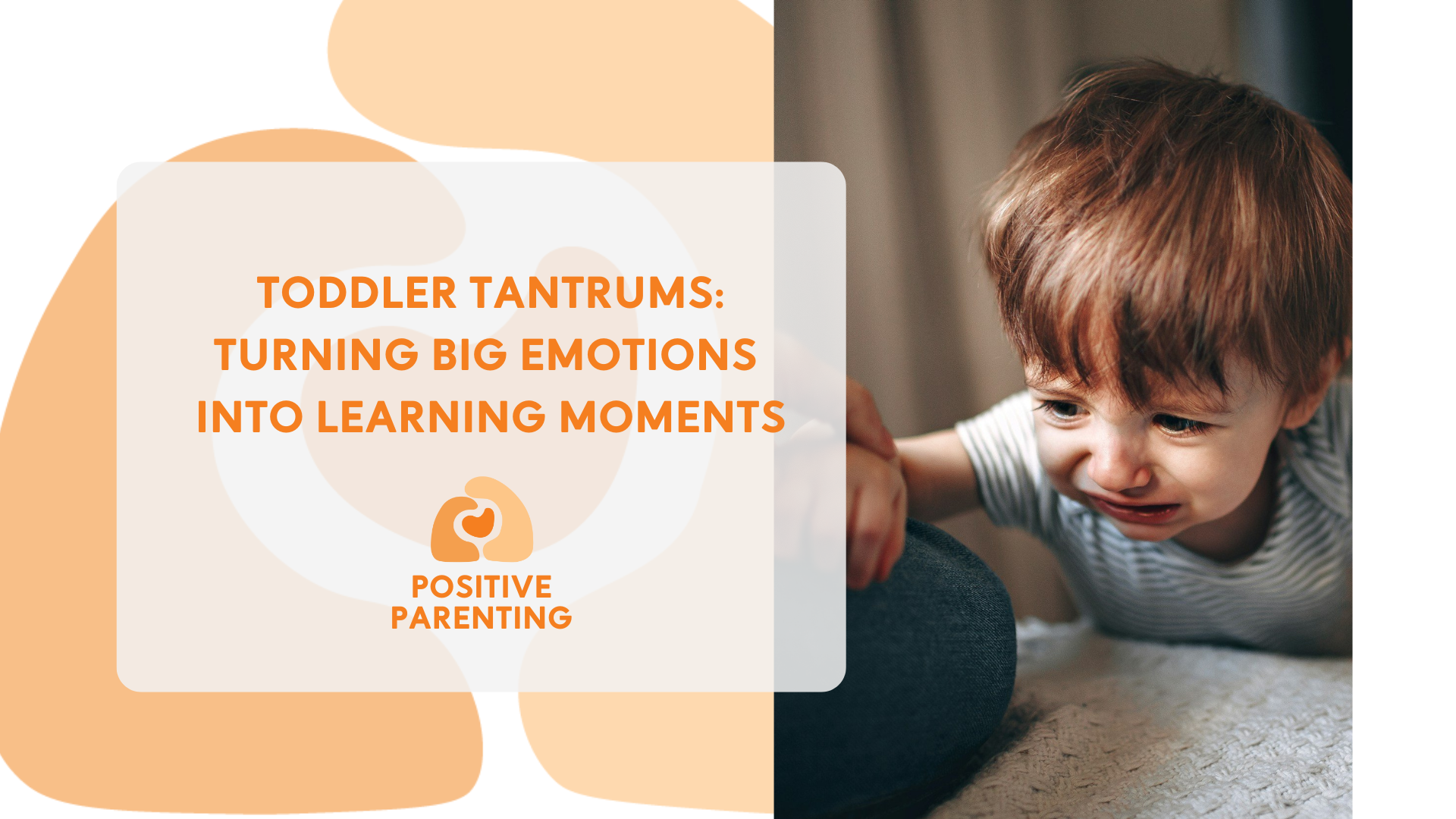Positive Parenting Methods: How to Manage Toddler Tantrums and Encourage Good Behaviour
Toddler tantrums are a natural part of childhood development. As young children grow, they experience big emotions but often lack the words or skills to express them effectively. Tantrums can be overwhelming for parents, but they offer an opportunity to guide children through their emotions while reinforcing positive behaviour. With patience, understanding, and consistency, it is possible to manage tantrums and encourage better responses in the future.
Understanding the Cause of Tantrums
Tantrums often stem from frustration, tiredness, hunger, or an inability to communicate needs effectively. Young children are still developing self-regulation skills, so when they feel overwhelmed, they may express their emotions through crying, yelling, or physical actions. Recognising what triggers a tantrum helps parents anticipate and prevent meltdowns before they escalate.
Changes in routine, overstimulation, and feeling a lack of control can also contribute to emotional outbursts. Creating a structured and predictable environment helps children feel more secure, reducing the likelihood of overwhelming situations.
Common Toddler Tantrums
While every child is different, some tantrum triggers are more common than others. These include:
Not getting what they want – Whether it's a toy, snack, or staying up past bedtime, toddlers often react strongly to being told "no."
Struggles with transitions – Moving from one activity to another, like leaving the park or turning off the TV, can trigger frustration.
Frustration from communication difficulties – When toddlers struggle to express their needs, they may resort to crying or outbursts.
Feeling tired or hungry – Basic needs like rest and food play a big role in emotional regulation, and tantrums often increase when these needs aren’t met.
Wanting independence – Toddlers love to assert control, and power struggles often lead to emotional meltdowns.
Understanding these common triggers allows parents to approach tantrums with patience and prepare strategies to reduce their frequency.
Responding Calmly and Compassionately
It is natural to feel frustrated when a child is having a meltdown, but maintaining a calm and steady approach is key. Young children look to their parents for reassurance and guidance. Reacting with anger or frustration can escalate the situation, whereas staying composed helps de-escalate their emotions.
Offering comfort while setting boundaries allows children to feel safe. Acknowledging their feelings—such as saying, “I can see you’re upset because you really wanted that toy”—helps them feel understood. Encouraging deep breaths or offering a quiet space to calm down can also provide support without giving in to demands.
Setting Clear and Consistent Boundaries
Children thrive when they understand expectations. Clear and simple guidelines help them navigate their emotions and actions. Rather than focusing on what they cannot do, redirecting behaviour with positive language makes a difference. Instead of saying, “Don’t grab,” try, “Let’s take turns.”
Consistency is essential. If boundaries constantly shift, children may become confused and test limits more frequently. Reinforcing rules with kindness and patience ensures they feel supported while learning what is acceptable.
Encouraging Positive Behaviour Through Recognition
Focusing on positive behaviour rather than just correcting misbehaviour helps shape a child’s responses. Acknowledging when they use words instead of crying, share with others, or follow instructions encourages them to repeat those actions.
Rather than vague praise, offering specific feedback makes a stronger impact. Saying, “You waited so patiently for your turn. That was really kind,” reinforces exactly what they did well. Simple gestures like a smile, a high-five, or a warm hug can also be powerful in reinforcing good choices.
Providing Choices to Promote Independence
Toddlers crave independence, and power struggles often arise when they feel a lack of control. Offering simple choices—such as choosing between two snacks or picking out their outfit—gives them a sense of autonomy while still maintaining structure.
Allowing children to make small decisions fosters confidence and reduces frustration. Encouraging them to take part in routines, such as putting their shoes on or helping to tidy up, also nurtures responsibility and cooperation.
Helping Children Express Emotions in Healthy Ways
Teaching children to recognise and express their emotions constructively is an important step in reducing tantrums. Encouraging them to use words, facial expressions, or even simple gestures helps them communicate their feelings without resorting to outbursts.
Books, role-playing, and modelling emotional regulation provide valuable learning opportunities. Saying, “I feel frustrated when I can’t find my keys, so I take a deep breath,” demonstrates practical strategies they can use themselves.
Establishing Routines for Stability
A predictable daily routine helps toddlers feel secure and reduces uncertainty. Regular mealtimes, naps, and playtime create structure and minimise meltdowns due to tiredness or overstimulation. While some flexibility is necessary, maintaining a consistent routine allows children to understand what to expect throughout the day.
When transitions are necessary, preparing children in advance helps ease the process. Giving a gentle reminder before leaving the park or starting bedtime makes change feel less abrupt, reducing resistance.
Modelling the Behaviour You Want to See
Children learn by observing their caregivers. Demonstrating patience, kindness, and self-regulation sets a powerful example. Responding to frustrations calmly, using polite words, and treating others with respect teaches valuable social and emotional skills.
By modelling positive interactions, children are more likely to mirror these behaviours. Encouraging problem-solving and respectful communication from an early age lays the foundation for stronger emotional resilience.
Managing toddler tantrums and encouraging good behaviour requires patience, understanding, and consistency. By responding calmly, setting clear boundaries, and reinforcing positive actions, parents can guide their children through emotional challenges while nurturing independence and confidence.
Each child is unique, and no approach works perfectly in every situation. However, by building a strong foundation of trust, empathy, and clear expectations, parents can navigate the toddler years with greater confidence and create a supportive environment for their child’s growth.
For more insights and expert guidance,any questions or need further parenting tips, feel free to reach out to us. We’re here to support you on your parenting journey!


